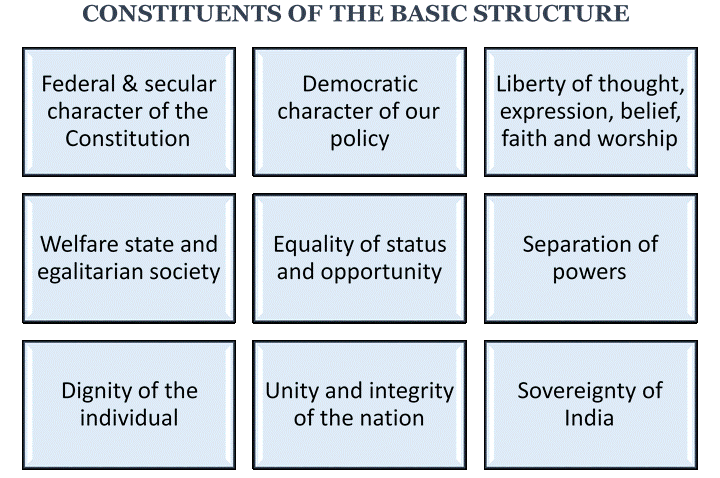From UPSC perspective, the following things are important :
Prelims level: Kesavananda Bharati case
Mains level: relevance and importance of the Basic Structure doctrine in maintaining a balance of power in a democracy

Central Idea:
The article underscores the significance of the Kesavananda Bharati case in Indian constitutional history, highlighting how it established a crucial safeguard against potential tyranny and dictatorship. The case introduced the concept of the Basic Structure doctrine, asserting that even constitutional amendments passed by a parliamentary majority could be declared unconstitutional if they violated the fundamental principles integral to the Indian Constitution.
Key Highlights:
- The Kesavananda Bharati case marked a turning point by introducing the Basic Structure doctrine, preventing the constitutionalization of gross aberrations or tyranny through amendments.
- The Basic Structure doctrine empowers the judiciary to act as a check against potential misuse of power by the majority, safeguarding democracy.
- The article traces the evolution of this doctrine from earlier cases, such as Shankari Prasad, Sajjan Singh, and Golaknath, leading up to the Kesavananda Bharati judgment.
Key Challenges:
- The Basic Structure doctrine has faced challenges from those seeking to dilute or ignore its significance, posing a threat to the enduring democratic principles it upholds.
- The potential for misuse or misinterpretation of the Basic Structure doctrine could lead to controversies and confrontations in politics and governance.
Key Terms:
- Basic Structure: The fundamental principles and core features of the Indian Constitution that cannot be altered by constitutional amendments.
- Parliamentary Majority: The voting majority in the Parliament required to pass constitutional amendments.
- Constitutional Amendments: Changes made to the constitution, often requiring a special majority in the Parliament.
Key Phrases:
- “Basic Structure makes it impossible to constitutionalize gross aberrations.”
- “Anti-majoritarian safeguards”: Mechanisms in place to protect against the potential tyranny of the majority in a democracy.
Key Quotes:
- “Even a constitutional amendment can be declared unconstitutional if it violates the Basic Structure.”
- “The power of amendment… does not include the power to abrogate the Constitution.”
Anecdotes:
- The unsavoury episode of Chief Justice A N Ray attempting to unilaterally review the Kesavananda Bharati judgment in 1975 is highlighted, adding drama to the historical significance of the case.
- The description of Nani Palkhivala’s arguments as “divinity speaking through him” during the case adds a personal touch to the historical narrative.
Key Statements:
- “The highest bulwark of such safeguards is the Indian Constitution.”
- “Long live Basic Structure, despite the attempt of constitutional pygmies to jettison, dilute or ignore it.”
Key Examples and References:
- Reference to the Shankari Prasad, Sajjan Singh, and Golaknath cases to illustrate the evolution of the Basic Structure doctrine.
- Mention of the 24th to 26th constitutional amendments enacted in 1971 to overrule specific judgments and provide context to the Kesavananda Bharati case.
Key Facts and Data:
- The Kesavananda Bharati case involved 703 pages of judgment spread over 11 judicial opinions, making it India’s longest argued case with the largest bench.
- The Golaknath case in 1967 had a 6-5 majority holding the entire Part 3 of the Constitution unamendable.
Critical Analysis:
The article presents a critical analysis of the Kesavananda Bharati case, highlighting its significance as a safeguard against potential misuse of power. It underscores the importance of the Basic Structure doctrine in preserving democratic principles and preventing constitutional aberrations.
Way Forward:
- Emphasize the continued relevance and importance of the Basic Structure doctrine in maintaining a balance of power in a democracy.
- Advocate for a nuanced understanding and application of the doctrine to ensure its integrity while addressing any legitimate concerns about its misuse.
Get an IAS/IPS ranker as your 1: 1 personal mentor for UPSC 2024
